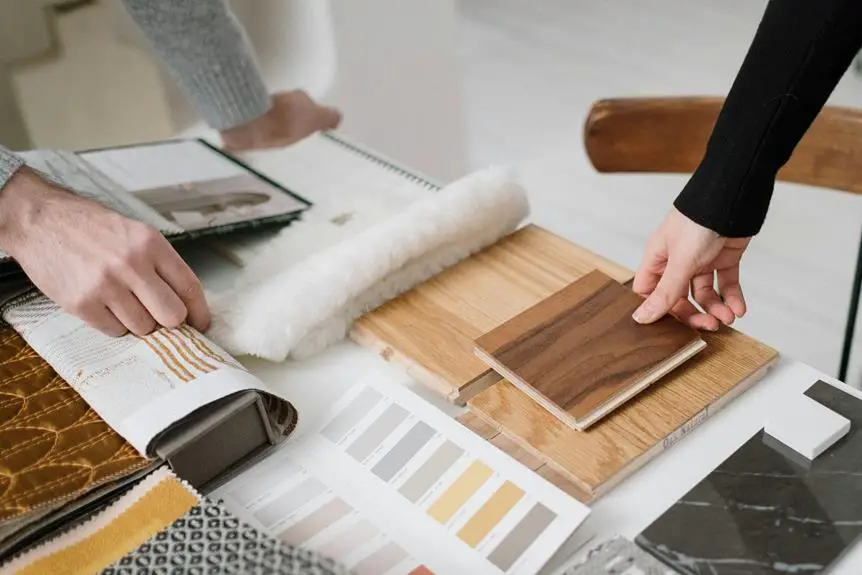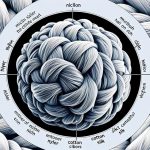When you're looking for fade-resistant fabrics, it's essential to consider various factors that influence durability and appearance. Start by understanding fabric composition and checking for UV resistance, as these elements play a crucial role in maintaining color vibrancy. You'll want to pay attention to colorfastness ratings and explore options with special treatments designed to resist fading. But what happens when you think you've found the perfect fabric? There are still important maintenance tips that could make all the difference in the long run.
Table of Contents
Key Takeaways
- Opt for synthetic fibers like polyester or nylon, which are inherently more fade-resistant compared to natural fibers like cotton and linen.
- Look for fabrics labeled with UV resistance, as they provide better protection against color loss from sunlight exposure.
- Check colorfastness ratings; choose fabrics with a rating of 4 or higher for improved resistance to fading.
- Consider treated fabrics that have chemical enhancements, such as UV stabilizers, for better durability and color retention.
Understand Fabric Composition
To choose fade-resistant fabrics, you need to understand the composition of the materials involved. Different fibers react uniquely to sunlight and washing, affecting their longevity and appearance.
Natural fibers like cotton and linen tend to fade faster than synthetic options. While cotton is breathable and comfortable, it absorbs UV rays and can lose color quickly when exposed to sunlight.
On the other hand, synthetic fibers such as polyester and nylon are more resistant to fading. These materials are engineered to withstand harsh conditions, making them ideal for outdoor use. Blends of natural and synthetic fibers can offer a balance of comfort and durability, so consider these combinations when selecting fabrics.
You should also check the dyeing process used on the fabric. Reactive dyes tend to bond better with fibers, resulting in deeper, longer-lasting colors. In contrast, direct dyes may not adhere as well, leading to quicker fading.
When evaluating fabric options, always think about the intended use and environment. By understanding these aspects of fabric composition, you can make informed choices that keep your textiles looking vibrant longer.
Check for UV Resistance
Look for fabrics that specifically mention UV resistance, as this feature significantly enhances their ability to withstand sun exposure without fading.
When you're shopping for fade-resistant materials, pay attention to labels that highlight UV protection. Fabrics treated with UV inhibitors can block harmful rays, which not only protects the fabric itself but also helps maintain the vibrancy of colors over time.
As you explore options, consider the fabric's weave and density. Tightly woven fabrics generally provide better UV protection than loosely woven ones. If you're looking for outdoor furniture or patio umbrellas, materials like solution-dyed acrylic or polyester are excellent choices due to their inherent UV resistance.
Don't forget to check for any certifications or standards that indicate UV protection. Some fabrics may be tested against specific UV exposure levels, giving you peace of mind about their durability.
Finally, remember that UV resistance can diminish over time, especially with frequent washing or exposure to harsh elements. Regularly assess your fabrics and consider replacing them if you notice significant fading.
Evaluate Colorfastness Ratings
Understanding colorfastness ratings is crucial for selecting fabrics that will maintain their hue even after prolonged exposure to sunlight and washing.
When you're examining fabrics, look for the AATCC (American Association of Textile Chemists and Colorists) colorfastness test results. These ratings typically range from 1 to 5, with 5 indicating the highest resistance to fading.
A rating of 4 or higher is generally considered acceptable for outdoor use, as it signifies good to excellent resistance against light, water, and washing. If you're choosing fabric for items that will see regular washing, like curtains or upholstery, pay close attention to the washing colorfastness rating. A lower rating here could mean that colors might bleed or fade with repeated laundering.
Additionally, consider the type of dye used. Fiber-reactive dyes often have higher colorfastness ratings compared to direct dyes, so they're worth looking for.
Keep in mind that even high-rated fabrics can fade over time, especially if they're consistently exposed to harsh sunlight. Prioritizing colorfastness will help you choose fabrics that stay vibrant longer, enhancing the longevity of your textiles.
Consider Fabric Treatments
How can fabric treatments enhance the durability and fade resistance of your chosen textiles?
When you opt for treated fabrics, you're investing in materials designed to withstand the elements better than untreated options. Many manufacturers apply specialized treatments that help repel water, resist stains, and protect against UV rays. These enhancements make the fabric not only more durable but also less likely to fade over time.
Look for fabrics with chemical treatments like UV stabilizers, which absorb harmful rays and prevent color degradation. Additionally, some fabrics undergo dyeing processes that infuse color deeper into the fibers, improving color retention. You might also consider anti-fade treatments that specifically target color preservation.
It's essential to read product labels or ask your supplier about the specific treatments applied to the fabric. This information will help you choose textiles that align with your needs and environment.
Care and Maintenance Tips
Proper care and maintenance can significantly extend the life and fade resistance of your fabrics. To start, always read and follow the care labels. Washing fabrics in cold water and using gentle detergents can help prevent color loss. Avoid bleach and harsh chemicals, as they can break down fibers and cause fading.
When drying, opt for air drying whenever possible. If you use a dryer, select a low-heat setting to minimize damage. Sun exposure can fade colors, so keep your fabrics out of direct sunlight when not in use. If you're using them outdoors, consider using UV protection sprays designed for fabrics.
For upholstery, vacuum regularly to remove dust and dirt that can cause wear. If you notice stains, treat them immediately with a mild stain remover, testing it first on an inconspicuous area.
Lastly, rotate your fabrics regularly to ensure even wear. By following these care and maintenance tips, you can keep your fade-resistant fabrics looking vibrant and new for years to come.
Frequently Asked Questions
What Types of Dyes Are Most Fade-Resistant for Fabrics?
When considering fade resistance, synthetic dyes like reactive and disperse dyes typically perform best. They bond tightly to fibers, reducing fading. Natural dyes can fade quicker, so it's wise to choose synthetic options for longevity.
Are Synthetic Fabrics Better Than Natural for Fade Resistance?
Synthetic fabrics generally offer better fade resistance than natural ones due to their chemical properties. They're designed to withstand sunlight and washing, so if you want long-lasting color, you should consider synthetic options for your projects.
How Does Sunlight Exposure Affect Fabric Longevity?
Sunlight exposure breaks down fabric fibers, leading to fading and deterioration. To protect your fabrics, limit direct sunlight, use UV-blocking window treatments, or rotate items regularly to minimize sun damage and prolong their lifespan.
Can I Dye Fade-Resistant Fabrics to Change Their Color?
Yes, you can dye fade-resistant fabrics to change their color, but results may vary. It's important to use the right dye and follow instructions carefully to achieve the desired outcome without compromising the fabric's properties.
What Is the Environmental Impact of Fade-Resistant Fabric Treatments?
The environmental impact of fade-resistant fabric treatments can be significant. You're often dealing with chemicals that may harm ecosystems. It's wise to research sustainable options and prioritize fabrics that minimize their ecological footprint while maintaining durability.
- How Does Ring Spun Cotton Affect Garment Fit and Shape Retention? - August 13, 2024
- What Are the Challenges in Producing Ring Spun Cotton? - August 13, 2024
- Is Ring Spun Cotton Suitable for Plus-Size Clothing? - August 13, 2024







